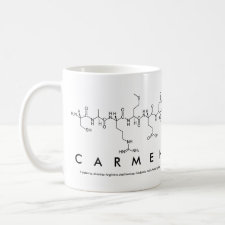
Authors: González-Chomón C, Silva M, Concheiro A, Alvarez-Lorenzo C
Article Title: Biomimetic contact lenses eluting olopatadine for allergic conjunctivitis.
Publication date: 2016
Journal: Acta Biomaterialia
Volume: 41
Page numbers: 302-311.
DOI: 10.1016/j.actbio.2016.05.032
Alternative URL: http://www.sciencedirect.com/science/article/pii/S1742706116302501
Abstract: Combination of the ability of contact lenses (CLs) to act as a physical barrier against airborne antigen and to serve as a sustained depot of antihistaminic drugs may improve the efficiency of treatments of some ocular allergic diseases. The aim of this work was to develop CLs that exhibit affinity to olopatadine by mimicking the composition of the natural H1-receptor for which olopatadine behaves as a selective antagonist. Functional monomers that match the chemical groups of the receptor and application of the molecular imprinting technology led to hydrogels able to load high amounts of olopatadine and to sustain the release once in contact with lachrymal fluid. Optimized hydrogels prepared with acrylic acid, 2-acrylamido-2-methyl-1-propanesulfonic acid and benzylmethacrylate as functional monomers provided in few hours olopatadine concentrations similar to those of commercially available eye drops but the levels could be sustained for a whole day, demonstrating their efficacy. Olopatadine-loaded CLs successfully passed the HET-CAM test of ocular irritancy and showed good compatibility with mast cells. They were able to inhibit the release of histamine and TNF-α from sensitized mast cells, proving their potential application in preventing and treating allergic conjunctivitis
Template and target information: olopatidine
Author keywords: Olopatadine, Allergic conjunctivitis, Bioinspired contact lens, molecular imprinting, controlled drug release, Antihistaminic effect



Join the Society for Molecular Imprinting

New items RSS feed
Sign-up for e-mail updates:
Choose between receiving an occasional newsletter or more frequent e-mail alerts.
Click here to go to the sign-up page.
Is your name elemental or peptidic? Enter your name and find out by clicking either of the buttons below!
Other products you may like:
 MIPdatabase
MIPdatabase









